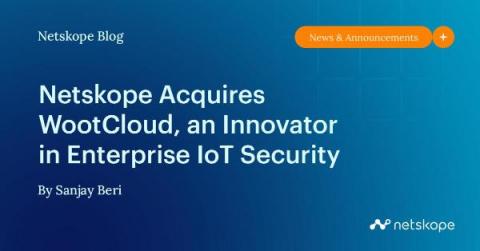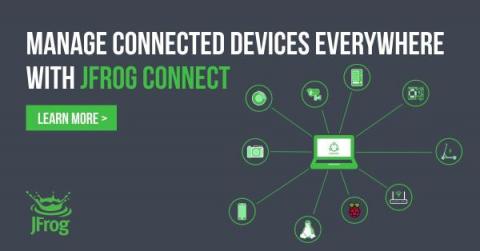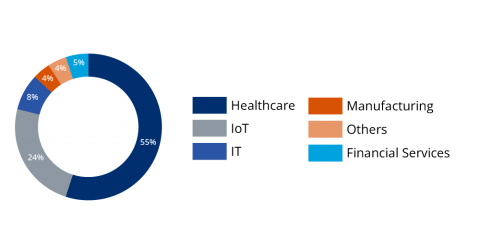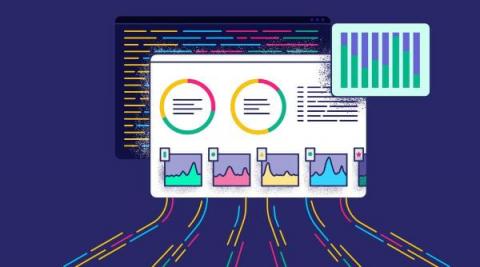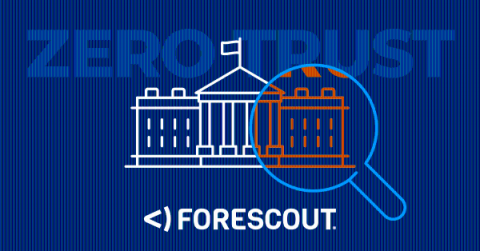Security | Threat Detection | Cyberattacks | DevSecOps | Compliance
IoT
Netskope Acquires WootCloud, an Innovator in Enterprise IoT Security
By 2025, there will be 55.7 billion connected IoT devices (or “things”), generating almost 80B zettabytes (ZB) of data. These are just some of the statistics that underscore enormous opportunity in IoT—and the enormous security risks all those IoT devices create.
Rapidly evolving IoT malware EnemyBot now targeting Content Management System servers and Android devices
AT&T Alien Labs™ has been tracking a new IoT botnet dubbed “EnemyBot”, which is believed to be distributed by threat actor Keksec. During our investigations, Alien Labs has discovered that EnemyBot is expanding its capabilities, exploiting recently identified vulnerabilities (2022), and now targeting IoT devices, web servers, Android devices and content management system (CMS) servers.
JFrog Connect: Ready for What's Next for DevSecOps, Edge and IoT
Today at swampUP, our annual DevOps conference, JFrog CTO Yoav Landman unveiled the next step toward making the Liquid Software vision of continuous, secure updates a truly universal reality. We’ve introduced JFrog Connect, a new solution designed to help developers update, manage, monitor, and secure remote Linux & Internet of Things (IoT) devices at scale.
The Industrial Internet of Things and Cybersecurity
How Tripwire Log Center and Tripwire Industrial Visibility Can Work Together
Many industrial security professionals lack visibility into their organizations’ assets and processes. This includes Industrial Internet of Things (IIoT) devices as well as industrial organizations’ supply chains. Back in March 2021, Tripwire announced the results of a survey in which 99% of security professionals said that they had experienced challenges securing their organizations’ IoT and IIoT devices.
What's on your security roadmap? Cybersecurity forecasting from an IoT ecosystem
Since joining a restaurant chain more than three years ago, this Chief Information Security Officer (CISO) has been a driving force behind its ability to stay ahead of the security curve. Here, they share why they’re focusing on securing third-party access, customer identity and access management, security awareness training, software assurance, and situational awareness and response for the foreseeable future.
New Supply Chain Vulnerabilities Impact Medical and IoT Devices
Forescout’s Vedere Labs, in partnership with CyberMDX, have discovered a set of seven new vulnerabilities affecting PTC’s Axeda agent, which we are collectively calling Access:7. Three of the vulnerabilities were rated critical by CISA, as they could enable hackers to remotely execute malicious code and take full control of devices, access sensitive data or alter configurations in impacted devices.
IoT Security: How Important are Logs for System?
IoT has rapidly moved from a fringe technology to a mainstream collection of techniques, protocols, and applications that better enable you to support and monitor a highly distributed, complex system. One of the most critical challenges to overcome is processing an ever-growing stream of analytics data, from IoT security data to business insights, coming from each device. Many protocols have been implemented for this, but could logs provide a powerful option for IoT data and IoT monitoring?
How to meet OMB's Zero Trust Strategy goals for IT, IoT and OT Devices
On Jan. 26, the Office of Management and Budget (OMB) published its widely anticipated final version of its zero trust architecture strategy, identifying top cybersecurity priorities for the federal government. This achievement raises the country’s cyber defense strategy to a level commensurate with the “increasingly sophisticated and persistent threat campaigns” it faces.



